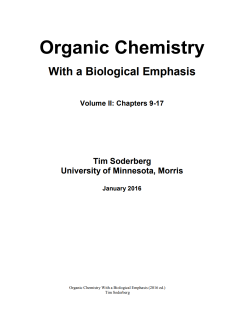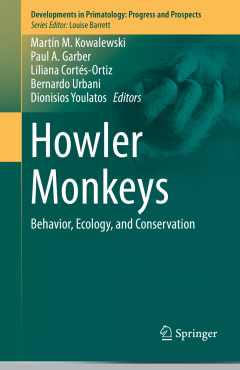Filter by

Organic Chemistry With a Biological Emphasis : Volumes II
The traditional approach to teaching Organic Chemistry, taken by most of the textbooks that are currently available, is to focus primarily on the reactions of laboratory synthesis, with much less discussion - in the central chapters, at least - of biological molecules and reactions. This is despite the fact that, in many classrooms, a majority of students are majoring in Biology or Health Scien…
- Edition
- -
- ISBN/ISSN
- -
- Collation
- -
- Series Title
- -
- Call Number
- 547 SOD o

Introduction to Statistical Thinking
The target audience for this book is college students who are required to learn statistics, students with little background in mathematics and often no motivation to learn more. It is assumed that the students do have basic skills in using computers and have access to one. Moreover, it is assumed that the students are willing to actively follow the discussion in the text, to practice, and more …
- Edition
- -
- ISBN/ISSN
- -
- Collation
- -
- Series Title
- -
- Call Number
- 500 YAK i

Howler Monkeys: Behavior, Ecology, and Conservation
Howler monkeys (genus Alouatta) comprise twelve species of leaf-eating New World monkeys that range from southern Mexico through northern Argentina. This genus is the most widespread of any New World primate taxa, and can be found to inhabit a range of forest types from undisturbed rainforest to severely anthropogenically impacted forest fragments. Although there have been many studies on indiv…
- Edition
- -
- ISBN/ISSN
- 978-1-4939-1959-8
- Collation
- XIX, 440
- Series Title
- -
- Call Number
- 540 HOW

Howler Monkeys: Adaptive Radiation, Systematics, and Morphology
Howler monkeys (genus Alouatta) comprise 12 species of leaf-eating New World monkeys that range from southern Mexico through northern Argentina. This genus is the most widespread of any New World primate and can be found to inhabit a range of forest types from undisturbed rainforest to severely anthropogenically-impacted forest fragments. Although there have been many studies on individual spec…
- Edition
- -
- ISBN/ISSN
- 978-1-4939-1956-7
- Collation
- XXI, 425
- Series Title
- -
- Call Number
- 540 HOW

Negotiating Climate Change in Crisis
Climate change negotiations have failed the world. Despite more than thirty years of high-level, global talks on climate change, we are still seeing carbon emissions rise dramatically. This edited volume, comprising leading and emerging scholars and climate activists from around the world, takes a critical look at what has gone wrong and what is to be done to create more decisive action.
- Edition
- -
- ISBN/ISSN
- 9781800642621
- Collation
- -
- Series Title
- -
- Call Number
- 551 NEG

How to Count: An Introduction to Combinatorics and Its Applications
Providing a self-contained resource for upper undergraduate courses in combinatorics, this text emphasizes computation, problem solving, and proof technique. In particular, the book places special emphasis the Principle of Inclusion and Exclusion and the Multiplication Principle. To this end, exercise sets are included at the end of every section, ranging from simple computations (evaluate a fo…
- Edition
- -
- ISBN/ISSN
- 978-3-319-13843-5
- Collation
- XV, 361
- Series Title
- -
- Call Number
- 510 BEE h
Hot Carrier Degradation in Semiconductor Devices
This book provides readers with a variety of tools to address the challenges posed by hot carrier degradation, one of today’s most complicated reliability issues in semiconductor devices. Coverage includes an explanation of carrier transport within devices and book-keeping of how they acquire energy (“become hot”), interaction of an ensemble of colder and hotter carriers with defect prec…
- Edition
- -
- ISBN/ISSN
- 978-3-319-08993-5
- Collation
- X, 517
- Series Title
- -
- Call Number
- 530 HOT

Host Manipulations by Parasites and Viruses
This edited volume focuses on parasite-host relationships and the behavioral changes parasites may trigger in their hosts. Parasites have developed strategies which enhance their chances to find a host to survive inside its body and to become most easily transmitted to one another. Many of these parasites influence the host’s behavior by various mechanisms, so that the rate of their transmiss…
- Edition
- -
- ISBN/ISSN
- 978-3-319-22935-5
- Collation
- XII, 192
- Series Title
- -
- Call Number
- 574.5 HOS

Host Defense Peptides and Their Potential as Therapeutic Agents
This book offers an overview of our current understanding of host defense peptides and their potential for clinical applications as well as some of the obstacles to this. The chapters, written by leading experts in the field, detail the number and diversity of host defense peptides, and discuss the therapeutic potential not only of antibacterial, but also of antifungal, antiviral, plant antimic…
- Edition
- -
- ISBN/ISSN
- 978-3-319-32947-5
- Collation
- X, 321
- Series Title
- -
- Call Number
- 540 HOS

Homogeneous Gold Catalysis
The series Topics in Current Chemistry presents critical reviews of the present and future trends in modern chemical research. The scope of coverage is all areas of chemical science including the interfaces with related disciplines such as biology, medicine and materials science. The goal of each thematic volume is to give the non-specialist reader, whether in academia or industry, a comprehen…
- Edition
- -
- ISBN/ISSN
- 978-3-319-13721-6
- Collation
- VII, 288
- Series Title
- -
- Call Number
- 540 HOM
 Computer Science, Information & General Works
Computer Science, Information & General Works  Philosophy & Psychology
Philosophy & Psychology  Religion
Religion  Social Sciences
Social Sciences  Language
Language  Pure Science
Pure Science  Applied Sciences
Applied Sciences  Art & Recreation
Art & Recreation  Literature
Literature  History & Geography
History & Geography